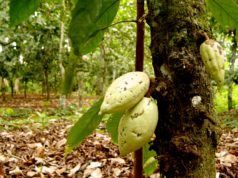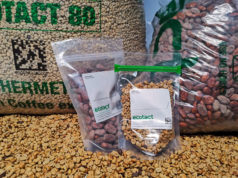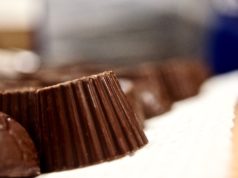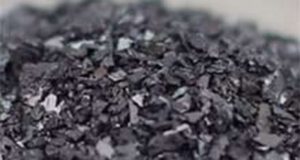By Joselina Rodríguez
Photos: Liliana Elías
So noble has been the cultivation of cocoa that today it can be faithfully copied through grafting, a method of vegetative reproduction that provides a new source of life to the grain. According to Elizabeth Cáceres, a technician in the Cacao Propagation Area at CESID-Cacao in Corpozulia, the grafting technique consists of taking one or more buds from an adult cocoa tree and joining it with a standard plant, the latter produced by a cocoa seed and coming from healthy and strong trees and good behaviour before climate, soil, pests and diseases.
“This technique allows it to maintain identical characteristics of the mother plant. In other words, it is a cloning process, thus the plant begins to produce at an early age. Before performing the grafting process, we select some of the “elite” trees to pull out the buds for reproducing them, “he explains.
According to the specialist, each bud will create a new tree canopy equally strong and productive, considering that the age of the standard plant ranges from 3 to 4 months, to achieve the thickness similar to a pencil. He remarks that before the grafting, the plant must be watered and disinfected.

Obtaining twigs
Once the “elite” of cocoa plants have been selected, the thickness pencil-like twigs are chosen and cut up at 25 to 30 centimetres long, according to CESID-Cacao specialist.
“The adult plant must be between 5 to 6 years old, with a minimum of two cocoa harvests. After the productive plants are selected, the twigs are cut up and inserted into the new plant. The chosen branches must be young and free from any type of disease or unfavourable condition. They are pulled out very early in the morning and worked the same day in order to take advantage of the plant sap, thus grafting could be carried out without any inconvenience “, he emphasizes.
Each twig should contain 7 to 10 buds. Once the twigs have been cut, each end is sealed with molten paraffin to avoid losing the sap. To carry out the grafting process you must have knives, plastic tape to tie the graft, candle wax, shears, alcohol or chlorine and cotton to disinfect the razor after each cut.
Preparation of pattern and bud with lateral veneered grafting.
Plant grafting is a world as extensive as fascinating. There are several types, such as: tap (chapita), micro-grafting, Malayan grafting, reeds and canopies, among others. At this time we are going to explain the lateral veneered grafting.
According to Cáceres, depending on the type of cutting to be made, the standard plant will be prepared by making a small incision on the bark of the stem, allowing its fusion with the adult plant. This cut is done under the scar of the cotyledons to avoid future erroneous pruning that could eliminate the original sprout of the bud.
“When a grafting is performed, a small crack is made on the standard plant (3 centimetres by 8 millimetres in U-shape), then the bark is lifted off the stem without detaching it completely, remaining like a kind of tongue, where the bud will be hosted. Subsequently the bud derived from the twig is pulled out as a patch or rectangle and inserted in the reed space, thus the sap of both plants could bond”, he explains. This process should not take more than a minute, otherwise the tissue would begin to rust and the adhesiveness percentage would be substantially reduced.
As soon as this union is made, a plastic strip is attached to it, giving several turns and fixing a knot, in order to protect the bud. After 15 days, the reed will be uncovered and cut completely, showing the definitive union of the grafted bud to the standard plant.
“After having removed the plastic tape, two or three leaves are removed from the canopy of the pattern plant and it is then sealed with paraffin to avoid spilling the sap or attracting the attention of an insect that could damage the plant. After completing this procedure, the grafted plant will remain under care until it gets strong and develops, since this will be a clone of the mother plant” Cáceres emphasizes.
The estimated time for a grafted plant to be fully developed in a nursery is 3 months. After this time the plant is planted in the field. A year after it begins the developing pruning in order to give symmetry to the plant.
Among the advantages of this new source of life for cocoa seed is its short-term production, compared to an un-grafted plant that lasts between 4 to 5 years.
“If a normal plant takes 5 years to produce its first crop, the grafted plant reduces that time from 18 months to 2 years, since its reproduction time has been accelerated by grafting it with one or more buds from a physiologically mature plant” The spokeswoman of Cesid-Cacao points out.
Another benefit is that planting distance can be reduced by obtaining more trees per hectare. There will also be a substantial improvement in the overall management of the plantation, obtaining trees significantly lower due to frequent pruning conditions. Under this scenario, all that is left from Vivaelcacao.com is to extol the immense potential that cocoa has, whose cultivation has proven to be so noble that it can be reproduced with adult plants, in order to improve its productivity and to give gratification to its producers.








